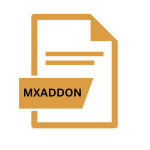.AVX File Extension

Avid Plugin File
| Developer | Avid Technology |
| Popularity | |
| Category | Plugin Files |
| Format | .AVX |
| Cross Platform | Update Soon |
What is an AVX file?
The .AVX file extension holds significant relevance, primarily associated with Avid Media Composer, a renowned non-linear editing system. These files serve as plugins integral to the functionality and versatility of the software.
Understanding the intricacies of .AVX files are essential for professionals and enthusiasts alike, as they play a vital role in enhancing the editing capabilities within the Avid ecosystem.
More Information.
The inception of .AVX files coincided with the growing demand for enhanced editing capabilities in the digital filmmaking industry. Avid recognized the need for a modular approach to software functionality, allowing users to tailor their editing environment to suit specific project requirements.
Thus, .AVX files were introduced as a standardized format for integrating plugins seamlessly into the Avid Media Composer ecosystem.
.AVX files primarily served to augment the editing process by providing additional tools and effects beyond the native capabilities of the software. Over time, their significance has grown, with developers continuously innovating and expanding the scope of plugins available in this format.
Today, .AVX files encompass a diverse range of functionalities, catering to the evolving needs of multimedia professionals across various domains.
Origin Of This File.
The .AVX file extension originates from Avid Technology, a company synonymous with pioneering advancements in digital non-linear editing systems. Avid Media Composer, one of their flagship products, introduced .AVX files as a means to extend the software’s functionality through third-party plugins.
These plugins encompass a wide array of features, from visual effects to audio processing, contributing to the richness of editing experiences offered by Avid.
File Structure Technical Specification.
At its core, an .AVX file is essentially a plugin module designed to integrate with Avid Media Composer. It comprises a set of instructions and resources that define its functionality within the editing environment. The structure of an .AVX file typically includes:
- Metadata: Information about the plugin, including its name, version, author, and compatibility details.
- Code: Executable code written in programming languages such as C++ or Avid’s proprietary scripting language. This code governs the behavior of the plugin within Avid Media Composer.
- Resources: Additional assets such as images, audio files, or configuration data are required for the proper functioning of the plugin.
- Dependencies: References to other files or libraries necessary for the plugin to operate correctly.
How to Convert the File?
Converting .AVX files are not a typical practice, as they are specifically designed for integration with Avid Media Composer.
If there arises a need to convert .AVX files to other formats or compatible alternatives, certain approaches can be considered:
- Extracting Assets: Since .AVX files often contain resources such as images, audio files, or configuration data, you can extract these assets for use in other software or projects. This involves manually locating and extracting the relevant files from within the .AVX package.
- Recreating Functionality: If the functionality provided by the .AVX plugin is essential, but compatibility issues prevent its usage, you may need to recreate the desired effects or tools using alternative methods or plugins available in your editing software of choice.
- Reverse Engineering: In some cases, developers may reverse engineer .AVX plugins to understand their functionality and recreate them in a different format or programming language compatible with other editing software. This approach requires advanced technical skills and may not always be feasible or legal.
- Utilizing Similar Plugins: Explore the availability of similar plugins or effects in other formats supported by your editing software. Many popular plugins and effects available for Avid Media Composer may have counterparts or equivalents in formats compatible with other editing platforms.
- Third-Party Conversion Tools: There may exist third-party conversion tools or services designed to convert .AVX files to other formats or standards. However, the reliability and effectiveness of such tools can vary, so thorough research and testing are advisable before relying on them.
- Consulting Plugin Developers: Reach out to the developers or creators of the .AVX plugin to inquire about compatibility or conversion options. They may offer guidance or solutions tailored to your specific needs or provide insights into potential workarounds.
- Exploring Alternative Editing Software: If compatibility issues persist, consider exploring alternative editing software that supports the functionality you require without the need for .AVX plugins. Transitioning to a different editing platform may offer a more straightforward solution than attempting to convert .AVX files.
Advantages And Disadvantages.
Advantage:
- Enhanced Functionality: .AVX files empower users with access to a vast ecosystem of third-party plugins, allowing them to augment Avid Media Composer’s capabilities according to their creative vision.
- Workflow Efficiency: By streamlining common editing tasks and providing specialized tools, .AVX plugins contribute to increased productivity and efficiency in multimedia production workflows.
- Customization Options: The modular nature of .AVX files enable users to tailor their editing environment precisely to their needs, fostering a personalized and optimized editing experience.
Disadvantage:
- Compatibility Issues: Some .AVX plugins may not be fully compatible with certain versions of Avid Media Composer or other software components, leading to potential stability or performance issues.
- Learning Curve: Mastering the usage of .AVX plugins effectively may require a significant investment of time and effort, particularly for users new to the Avid ecosystem or complex editing workflows.
- Cost: While many .AVX plugins are available for purchase or download, acquiring a comprehensive collection of high-quality plugins may entail significant financial investment, particularly for professional users.
How to Open AVX?
Open In Windows
To open .AVX files on Windows, you’ll need to have Avid Media Composer installed on your system.
Once installed, simply launch Avid Media Composer and the .AVX plugins will be accessible within the software’s editing environment.
Open In Linux
Directly opening .AVX files on Linux are not supported, as Avid Media Composer is not natively compatible with Linux operating systems.
You may explore compatibility options such as running Avid Media Composer through compatibility layers like Wine or using virtualization software like VirtualBox with a Windows or macOS guest operating system.
Open In MAC
Avid Media Composer is compatible with macOS, allowing you to open .AVX files seamlessly on Mac systems. Ensure you have Avid Media Composer installed, and then launch the software to access and utilize the .AVX plugins within the editing environment.
Open In Android
Opening .AVX files on Android devices is not feasible, as Avid Media Composer is not available for the Android platform.
.AVX files are specifically designed for desktop editing environments and may not be compatible with mobile operating systems.
Consider using alternative editing software available for Android that supports the desired functionality without relying on .AVX plugins.
Open In IOS
Similar to Android, opening .AVX files on iOS devices are not supported, as Avid Media Composer is not available for iOS. Mobile editing apps on iOS typically do not support .AVX plugins due to their desktop-oriented nature.
Explore alternative editing apps available on the App Store that offer similar features and functionality suitable for mobile editing workflows.
Open in Others
Opening .AVX files on other operating systems or platforms may require using compatibility layers, virtualization software, or alternative editing solutions tailored to specific needs.
Consider exploring options such as running Avid Media Composer on compatible virtual machines, utilizing cross-platform editing software, or converting .AVX files to formats supported by other editing applications.
Keep in mind that maintaining compatibility and preserving functionality may vary depending on the chosen approach.













